Aside from push ups, sit ups, and get ups, it’s not often that our fitness pursuits have us spending time on the ground. It’s a shame really. When we were kids we had no problem passing hours roughhousing and crawling along on the floor. Of course, from a developmental perspective, that made perfect sense. Coordinating the motion of all four limbs while scurrying along the floor was a crucial way to program our brain for more complex movement. Plus, being able to move with efficiency low to the earth was a prerequisite for safe movement in standing, running, or climbing higher above the ground.
Enter parkour and the need to reestablish ground control as a fundamental fitness skill. As you know, parkour athletes are focused on being able to move with efficiency in all situations. Being able to move on the ground on all fours is no different.
Whether you have fallen to the ground while running, are squirming out of a tunnel, or are ducking under a strand of barbed wire, your ability to coordinate your hands and feet will determine how quickly you can return to standing and continue on your way. Moving on all fours also has applications to quickly ascending a steep slope or safely descending from a rooftop. When height and an angled surface are involved, it often makes sense to get low and use your hands and feet for support rather than risk slipping.
Given the functional applications, as well as the great way it challenges your nervous system, moving on all fours on the ground definitely warrants a place in your fitness training.
How to Move on the Ground
As a first skill, just kneel on the ground and bring your chest to horizontal so you are supported with equal weight between your hand and knees. Now, try to march your opposite hand and knee off the ground at the same time. Alternate sides and keep with the opposite arm and leg arrangement.
This opposite hand and foot motion is critical. Defaulting to lifting the same arm and leg off the ground is a common mistake, but it means your weight isn’t evenly distributed from the left to right sides of you body. If you can’t stay coordinated with this skill, then it becomes much harder to stay balanced when you are actually moving forward. The reciprocating motion can be a bit of a mind bender when you are first learning it, but don’t over think it. Alternating hand and foot motion is a natural pattern, something you do subconsciously while walking.
Once you feel comfortable marching with all fours limbs on the ground, start to crawl forward. Make sure you keep in sync with the opposite arm and leg movement and avoid moving one limb at a time, which is much slower.
Quadrupedal Movement
After you’ve gotten the knack for crawling, it’s time to come off your knees and learn what is referred to as basic quadrupedal movement (QM).
- Keep your back horizontal as you progress forward.
- Maintain the reciprocating motion of opposite hand and foot progression.
- Place your hands and feet on the ground to optimize the support through your hips and shoulders.
For two variations, try doing basic QM backwards along the floor and also up a flight of stairs or a small hill.
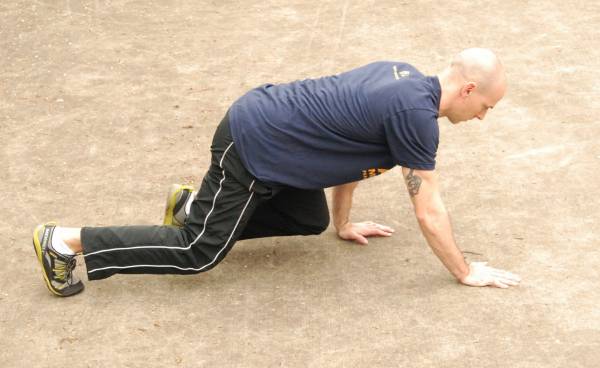
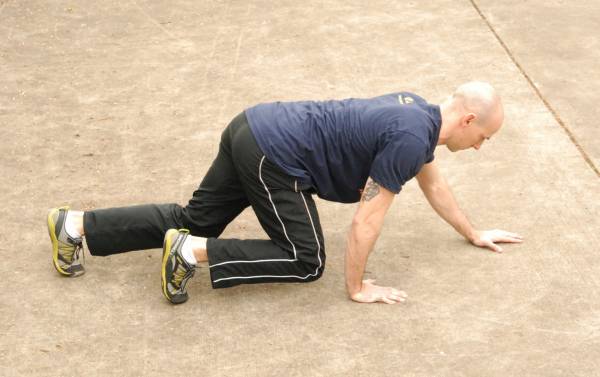
Crab Walk
Another key ground movement is the crab walk we all did in elementary school gym class.
- Flip your body around so you are supported on your hands and feet with your chest facing the sky.
- Advance your opposite arm and leg in the same reciprocating motion you used in QM.
- Push through your hips to keep your bottom from scraping along the ground.
- Stack your hands under your shoulders for optimal support.
Make it harder by lifting your pelvis higher off the ground as if your trunk were a tabletop.
The crab walk is a good skill for descending a steep rocky slope. Practice it now so you are prepared for when the real-life situation presents itself.
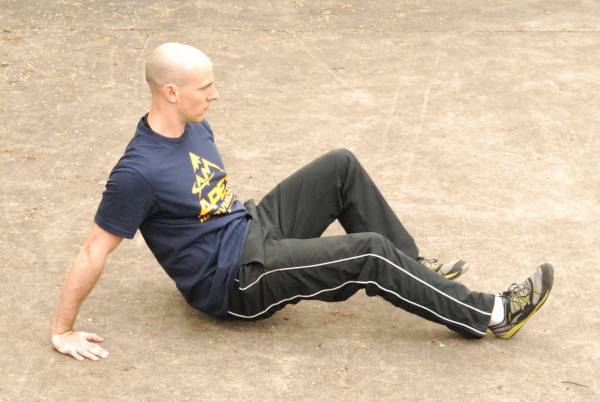
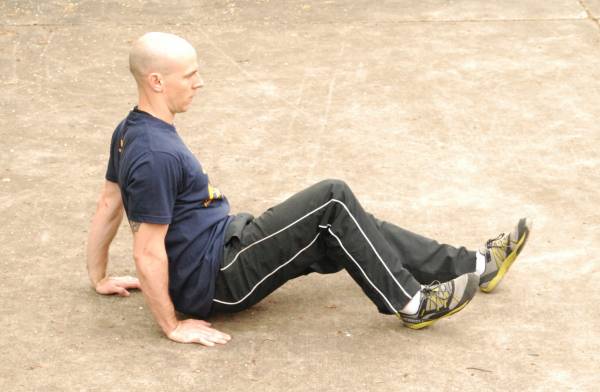
Ground Kong
For a final exercise, you’re going to do a more explosive movement called a ground kong, which is a preliminary skill to being able to do the full kong vault. Think of it as a rapid way to skip or hop forward along the ground on all fours.
- Get in a low squat on the floor with your hands raised and ready to reach forward.
- Explode from the squat, pushing through your legs, extending your trunk, and reaching forward with your hands.
- Place your hands on the ground shoulder-width apart.
- Keep your knees together and pull your legs upward to advance your feet forward, to your hands.
- First just try to get your toes near you palms, and then work to actually swing your feet through your arms ahead of your body.
- Keep your momentum moving forward so that you hop along the ground in a quick succession of ground kongs.
Be careful not to crash your knees into your elbows, which could be a painful mishap.
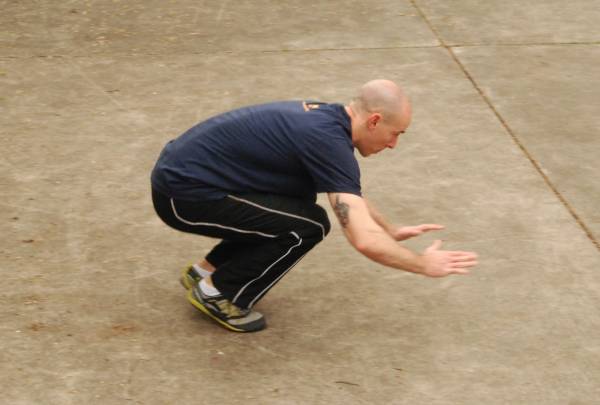
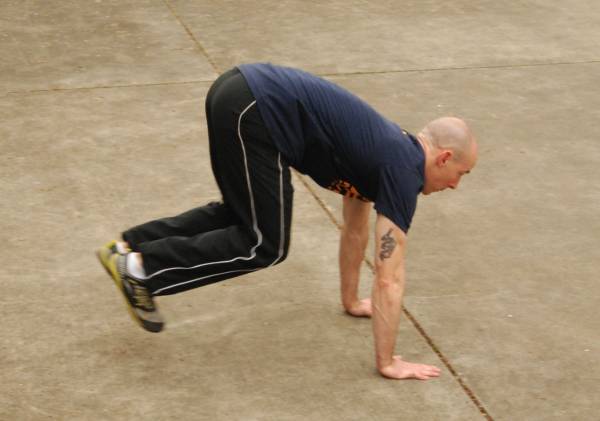
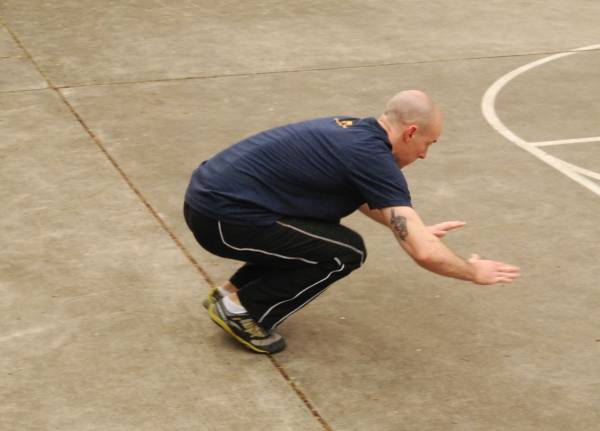
Aside from being a nice way to build coordination, efficiency, and whole body strength, ground movements like the three illustrated above are nice additions to the warm-up portion of a workout. Try them out in a park or your backyard!
Photo 1 courtesy of Shutterstock, all others by Ben Musholt.






